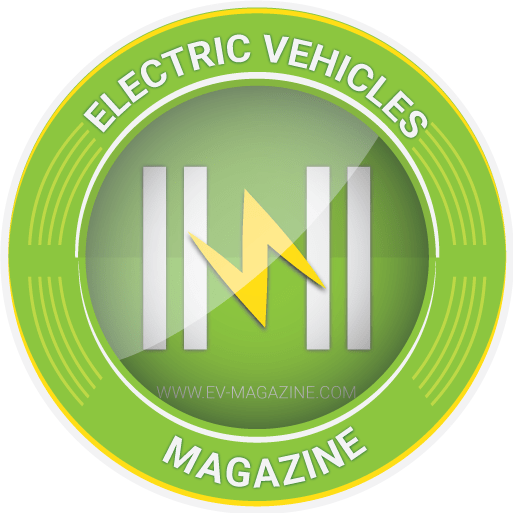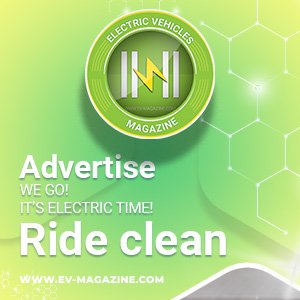

Smart Routing, Plug & Charge, Over-the-Air Updates, and Always-On eSIM Data
This article may include affiliate links.
America’s best EV drives don’t begin at the charger—they begin in your planning app and your connectivity plan. Whether you’re crossing Utah’s red rock in a crossover or dispatching a half-dozen light-duty vans across the Gulf Coast, the same trio keeps stress low and miles productive:
- smart routing,
- reliable charging handshakes and
- connectivity that doesn’t flake.
Here’s a field-tested playbook—road-trip friendly, fleet-manager approved.
Route Like a Pro (SoC, Weather, Elevation and Uptime)
Great routes think like batteries do. Instead of asking “Where’s the closest charger?”, ask “Which stop gives me the highest confidence and shortest total time?”
Build your route with four variables:
- State of Charge (SoC) buffers: Plan to arrive with 12–20% SoC and depart between 70–85% on most legs. Topping to 100% is slower; let the taper work for you.
- Elevation & temperature: Mountain climbs and headwinds bite. Preconditioning and a realistic buffer beat white-knuckling to a lonely off-ramp.
- Historical uptime: A site with eight stalls at 97% reliability is better than a two-post charger that looks “on the way.”
- Amenities & safety: Night charging next to a bright 24/7 stop lowers stress and keeps drivers alert.
Find a road-trip rhythm that works. Charge every 2–3 hours for 20–35 minutes. Stretch, bio break, grab a snack, and you’re rolling as the curve tapers.
Plug & Charge Without the Drama
A good charging session is a three-part handshake: car  cable
cable  network. When it clicks, you plug in, the screen says “Authorizing,” and electrons flow.
network. When it clicks, you plug in, the screen says “Authorizing,” and electrons flow.

Reduce handshake failures with these habits:
- Activate Plug & Charge (ISO 15118) in your vehicle/app where supported; it saves time and avoids card readers.
- Carry fallbacks: Add network apps and RFID cards to your kit. If the kiosk UI is sulking, tap the card and go.
- Cable discipline: Seat the connector fully, then hold steady for the first 3–5 seconds. Wiggling mid-authorization = retries.
- If a stall misbehaves: Stop, reseat and try another post before you re-route. One faulty dispenser shouldn’t sink your schedule.
Here’s a pricing tip. Networks can price by kWh, minute or session. Reading the label before you plug often saves more than hunting a “cheaper” stop 10 miles off course.
OTA, Apps and Preconditioning (Your Vehicle Is a Computer)
Over-the-Air (OTA) updates (maps, drive units, infotainment, charging logic) deliver real gains, but timing matters.
- Schedule OTA during charge stops or overnight at home base. Avoid midday installs that brick your dash for 20 minutes.
- App stack to keep: First-party nav, at least one independent planner, two major charging-network apps, a tire-pressure monitor, and your expense/telematics tool.
- Preconditioning the battery en route to DC fast charging can shave minutes off the stop. Accept the few extra kWh burned getting there; the overall trip is quicker.
Connectivity in 3 Minutes (Skip the Dead Zones)
When a station’s Wi-Fi crawls or a kiosk times out, your own mobile data keeps routing, charger apps and payments alive. Solve it before you leave the driveway.
A quick eSIM setup (spare phone or in-car tablet works great):
- Buy a travel eSIM and receive a QR code by email.
- On the device: Settings → Cellular/Mobile → Add eSIM → scan → label it Road Data.
- Set Road Data as the Mobile Data line; keep your primary line for calls/SMS/2FA
- Test once at home, then roll.
One route to simple, predictable data is with an eSim. You can get unlimited data with Holafly and make your laptop or dash tablet a hot spot for when public networks are unreliable.
This can make for fast fixes at a charger. If the app hangs, disable the venue Wi-Fi, use your eSIM data, then authorize again. Screenshots of your member IDs help when support asks for validation.
Fleet Corner: The Metrics That Actually Move TCO
For operators and small businesses, reporting is the product. Collect the numbers that change behavior—not just fill spreadsheets.
Track these weekly:

- kWh/100 mi (or mi/kWh): Compare by route type and climate. Outliers signal tire pressure, driving style or cargo differences.
- Charge dwell time: Minutes connected after hitting the planned SoC. Train drivers to unplug and move—time is money.
- Idle with HVAC: Cabin comfort matters; auditing heavy idle pockets reveals policy tweaks (pre-cool while plugged, not on the curb).
- Out-of-route events: Quick flags stop small detours from becoming late deliveries.
- Failed/aborted sessions: Count by site and network; move your preferred stops if the pattern persists.
Driver enablement is important. A laminated card beats a PDF—with QR codes to each charging app, a fleet support number, “what to try next” and the policy for paid parking at busy hubs.
Data Options (Road-Trip & Fleet Compare)
| Option | Setup | Coverage Flex | Cost Predictability | Shareable | Best For |
| Carrier hot spot add-on | None | Medium | Low (overages) | Yes | Single-state or short trips |
| Mi-Fi/puck (carrier-locked) | Medium | High (on that network) | Medium | Yes | Crews that rotate vehicles |
| Pre-installed eSIM | ~3 min | High (multi-network options) | High (prepaid) | Yes | Solo drivers, families and fleets |
Pro move: Mount the hot spot phone/tablet forward in the cabin and power it via USB so the nav and charger apps never lose their connection when passengers step out.
Troubleshooting on the Shoulder (30-Second Plays)
- “Charging failed” after 10 seconds: Reseat connector → try another stall → authorize via RFID → soft reboot the vehicle’s charge screen if available.
- App won’t sign in: Disable venue Wi-Fi → use your eSIM → force-quit and relaunch.
- Session is slow: Check SoC (above 80% tapers hard), battery temp (arrived cold/hot) and shared power cabinets; moving one stall over can sometimes double speed.
- Range anxiety spike: Drop cruising speed by 3–5 mph and set climate to Eco; your arrival SoC climbs within minutes.
Pre-Trip & Daily Checklists
EV Road-Trip (single vehicle)
- Route planned with two alternates per leg
- Tire pressures set; adapters/RFID cards packed
- First two charge stops pinned in maps
- Road Data eSIM tested; hot spot on
- Snacks, water, wipes and a headlamp (night charging)
- Payment cards in apps; receipts auto-forward to your expense tool
The Bottom Line
EV travel in 2025 isn’t about tolerating uncertainty; it’s about engineering it out. Smart routing avoids dead ends. Plug & Charge plus simple fallbacks keep sessions clean. Over-the-air updates make the car better while you eat. A dedicated data line means your apps work when the forecourt Wi-Fi doesn’t. Put those pieces together—whether you’re a solo road-tripper or managing a regional fleet—and your miles turn into momentum.
The post Charge, Route, Report: A 2025 U.S. EV Road-Trip & Fleet Guide first appeared on Clean Fleet Report.
Source link by Clean Fleet Report
Author Abdul Rehman
#Charge #Route #Report #U.S #RoadTrip #amp #Fleet #Guide



![Hyundai’s electric hot hatch spotted out in the wild for the first time [Images] Hyundai’s electric hot hatch spotted out in the wild for the first time [Images]](https://ev-magazine.com/wp-content/uploads/2025/12/1766723605_Hyundais-electric-hot-hatch-spotted-out-in-the-wild-for-324x160.jpeg)